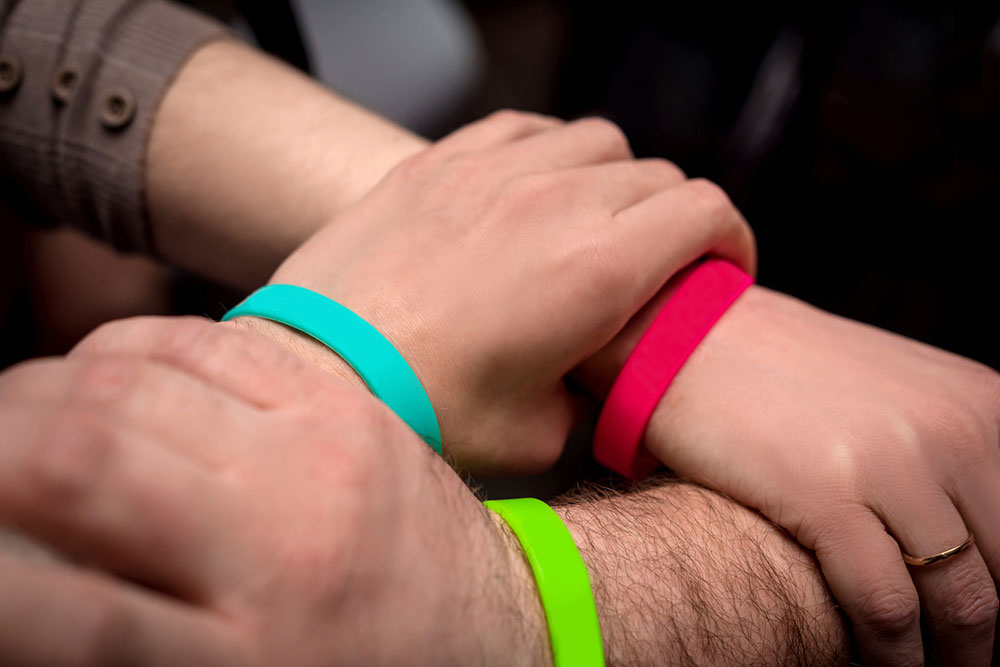7 common wristband branding mistakes to avoid

The world of marketing has seen constant change and growth. Messaging that once used to be reserved for televisions and posters is now being shared more subtly, such as wristbands. Wristbands have become an extremely popular brand-building method, from music shows and concerts to charities. However, many businesses make mistakes with this niche marketing style, which could cost them money. Read on to find out about some of them.
1. Not having a wristband marketing strategy
Wristbands are an understated way of marketing any business. These are fun and easy to wear, and they can be instrumental in getting the word out. These can be especially useful for businesses and spaces that cater to teens and younger audiences, as they can catch people’s interest and promote marketing by word of mouth. Keeping this in mind, one of the biggest mistakes businesses can make is not using wristbands for marketing.
If sharing them with the world seems like too much, creating a small set of wristbands for one’s team may also be effective. Although this will be on a smaller scale, building an internal brand and getting people talking may still work wonders.
2. Being inconsistent with branding
The key to the success of any marketing campaign is consistency, as it helps establish recognition and trust with the customers. This means that everything related to one’s business must align, including the website, business cards, packaging, print materials, ads, and even the wristbands. This creates a cohesive brand identity and improves the chances of brand recall among new and existing customers.
At the same time, businesses must keep their brand looking contemporary and relatable. Since this tool often lends itself well to younger audiences, try to find inspiration in current trends and tweak them to match business sensibilities.
3. Using poor-quality materials
Next, pay attention to the materials being used to make the wristbands. Look for comfortable or durable materials such as rubber, silicone, or fabrics that can handle daily wear and tear. If these are going to feature prints, ensure that good-quality ink is used so it does not fade away. A cheap or flimsy wristband is not only going to impact the business’s reputation with its customers but also affect the longevity of the marketing campaign.
4. Not allowing customization
There are a lot of ways to make an impression with a wristband marketing campaign, and one of them is customization. Many brands opt for generic designs or styles that fail to leave a mark. Instead of following the crowd, personalize these bands differently. Relying on unique and catchy slogans, creating specific categories, or using individual names are some ways to do so. This will make the customers more likely to talk about it or maybe even share a selfie, garnering a lot of personal attention for the brand.
5. Not paying attention to distribution
When using wristbands as a marketing tool, it is also crucial to highlight their distribution. Depending on the type of band and venue, these may be sold to customers, gifted during giveaways and promotions, or provided at entry or checkpoints for easy recognition. Companies must ensure that these are distributed at the right place and time to maximize their reach.
6. Forgetting about social media integration
Amidst all this, don’t forget to showcase the campaign on social media. Create a tied-in physical and digital marketing campaign with wristbands by asking customers and patrons to share their experiences with a common hashtag or post a photo wearing the band. This can have a three-pronged impact: increasing reach and engagement on social media, building community, and improving brand awareness and recognition.
7. Overcomplicating things
Last but not least, keep things simple. Overcomplicating things with too many symbols, quotes, colors, or designs may detract from the actual brand messaging or put a convoluted message forward. For instance, many brands use wristbands to outline certain categories, such as general, VIP, fan-pit, etc. However, demarcating too many classes could create confusion as people are more likely to forget them, doing more harm than good. To create a big impact and improve brand recognition, convey the message clearly.
Wristbands were popularized as a marketing tool back in 2004. Twenty years later, they remain one of the most favored brand recognition strategies, especially among the bold and young.